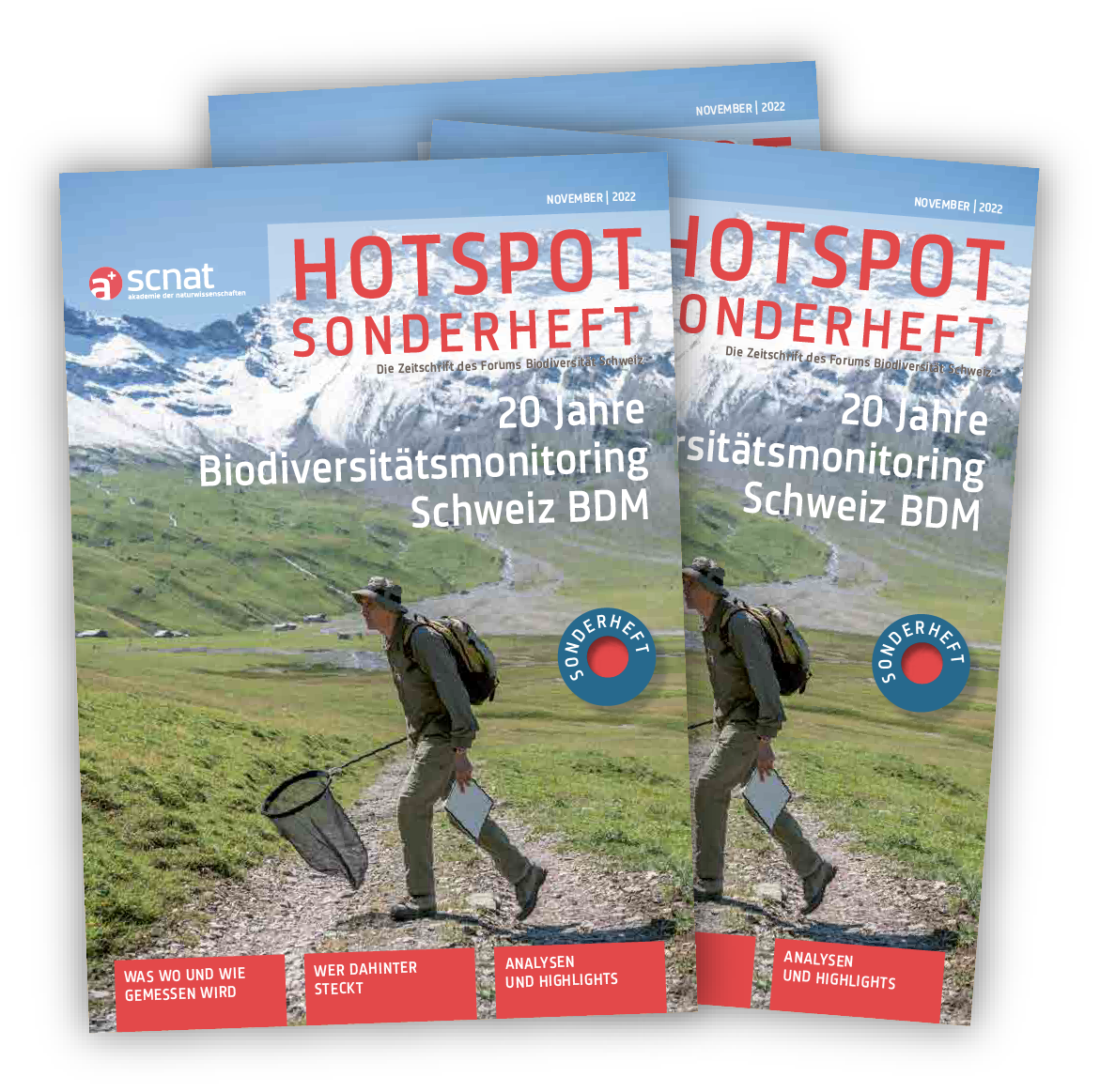Preparation

- Determining the annual sample
- Assembling field teams and determining workloads
- Adapting methodology guides for the field surveys, if necessary
- Adjusting the list of species authorised for the survey, if necessary
Instructions
- Launch events for the field teams for each species group: Notification of new developments, discussion of methodologically sensitive points
- Special instructions during the field season, especially with regard to weather conditions (safety aspects)
- Targeted educational events (e.g. identification of difficult species groups, further training, official verification)
Field work

- Field surveys according to regular methodology. Some of the sampling areas are surveyed twice for quality control by secondary groups.
- Vascular plants, butterflies, breeding birds: Observation and species identification on-site. Noting of species observations in the BDM app.
- Moss types, snails, aquatic invertebrates: Collecting of samples without further identification. For aquatic invertebrates, pre-sorting of samples on-site.
Dispatch of samples for further processing and identification
Laboratory work

Snails
- Washing and sieving of soil samples
- Sorting of snail shells
- Identification of snail shells at species level
Moss types
- Identification of moss samples at species level
Aquatic invertebrates
- Identification of aquatic invertebrates down to family level. Sharing of sample material for species identification
- Identification at species level for mayfly, stonefly and caddisfly larvae
Quality controls
- Plausibility checks on species identification, queries to field staff
- Calculation of routine key figures as indicators of data quality
- Evaluation of the consequences of methodological errors or deviations
- Decisions on the validity or invalidity of raw data
Data administration
- Import/entry of field data and laboratory protocols into a central database
- Checking the completeness of recordings and data records
- Incorporating decisions from quality control
- Documentation of all corrections to the raw data in a database log
Releasing and using data
- The revised data is declared valid and made available for data analyses
- Data analyses on current topics
- Calculation of further biodiversity indicators for the federal government and the cantons, e.g. legislative indicators, environmental indicators, contribution to the “Cercle Indicateurs”
- Data analysis by third parties, on request (e.g. universities)
- Data and species records are forwarded to the respective national data and information centre
Support in the field: recording app

Nowadays, it makes sense to record species in the field using a smartphone app. However, BDM has been recording data digitally for 20 years. In the beginning, it used Palm Pilot devices; today, field workers use standard Android smartphones. A crucial advantage from the outset: standardised data formats, species names and categories for all field workers, plus rapid data import. Vascular plant surveys in rural areas alone generate around 50,000 species observations every year across Switzerland! The app used was customised for the BDM and has been continuously developed since its first routine use in 2012. The app can be made available on request.

